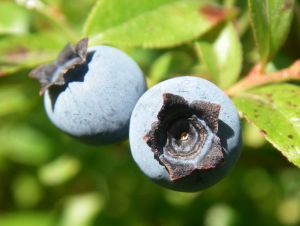
Do you love blueberries? These little gems are delicious, and they’re packed full of antioxidants too. Some of my most wonderful summer memories come from times spent picking (and eating!) these warm berries in my parents’ garden.
How do you grow blueberries?
First, choose your berry. Like raspberries, different varieties of blueberries are suitable for different times and locations. Highbush Blueberry or Vaccinium corymbosum is hardy in zones 3 to 7. These blueberries will self-pollinate, but they get a better yield when they are cross-pollinated. The Rabbiteye Blueberry or Vaccinium ashei prefers zones 7 to 9, and it needs to be cross-pollinated. The Southern Highbush or Vaccinium formosum likes zones 7 to 10. Like the Highbush, it will self-pollinate, but it does better when it cross-pollinates.
Even within these categories, there are different varieties of blueberries. Some varieties are early producers and some produce later. You can have blueberries all summer, but you do need to plant a variety of different bushes if you would like a consistent crop. If you’d like your berries to cross-pollinate, it’s also important to make sure that at least some of your blueberries will flower at the same time. If your blueberries aren’t producing a lot of berries, it may not be something that you did. If you buy tiny blueberry bushes, you need to be aware that they may not produce a lot of berries until their sixth year!
Once you’ve chosen your bushes, plant them in full sun and in rich soil that is full of organic matter. Space your blueberry plants are least 4 feet apart. Be aware that they can also grow to be about 4 feet high.
Blueberries are related to the water-loving cranberry and huckleberry, and they also like a lot of water. Their root systems are shallow, so they do need to be watered often. Unlike many vegetables, blueberries are adapted to the acidic soil of coniferous forests. Wood chips or needles from coniferous trees make excellent mulch for blueberries.
Image Credit: Martine Sansoucy

